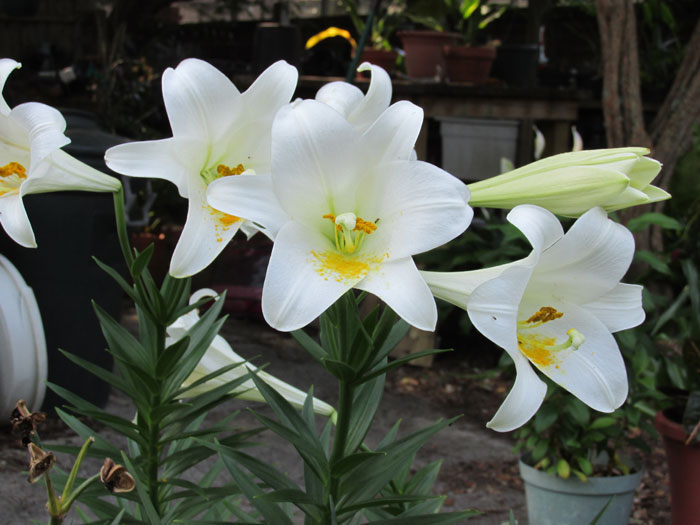Just about everyone adds a seasonal plant to their collection during the Easter season. Maybe it's a pot of tulips, a hydrangea or an Easter lily. Soon the flowers start to fade and then there is a big decision to make. Do you toss them or keep them?
It's difficult but if it grows from a bulb or bulb-like portion most should be tossed. Trying to bring tulips, hyacinths and daffodils into bloom another year takes almost heroic efforts. The plants need good care until the tops die back and then there is repotting and a cold treatment during the fall.
One exception is the Easter lily. The bulb grows and flower another year when added to the garden. Wait until the flowers fade and then plant the root ball in the ground at the same depth as it was growing in the pot. Give it normal perennial plant care. Mark the spot with a stake as the lily dies back by early summer but starts growth again during the winter.
Following are a few more plants you have to decide whether to toss or keep.
- Hydrangeas: Definitely worth keeping. Enjoy in a pot until the flowers discolor then plant in an area with morning sun and afternoon shade. Plantings need plenty of water and a mulch.
- Oriental lilies: You can try but most do not bloom a second year. Add to the garden after the booms shatter and treat as a perennial.
- Chrysanthemum: Most rebloom fall through spring. Remove the declining flower heads and keep in a pot or plant in the garden.
- Gardenia: Gift plants are seldom grafted and thus susceptible to nematodes. Continue to grow in a container in a filtered sun location.
- Orchids: Enjoy the Easter blooms and when the flowers fade hang in the shade of a tree. Keep moist and feed every other week.
As you now know a few of these plants may be worth keeping but they often need special care. Obtain more information on their needs from your local University of Florida Extension Office.

